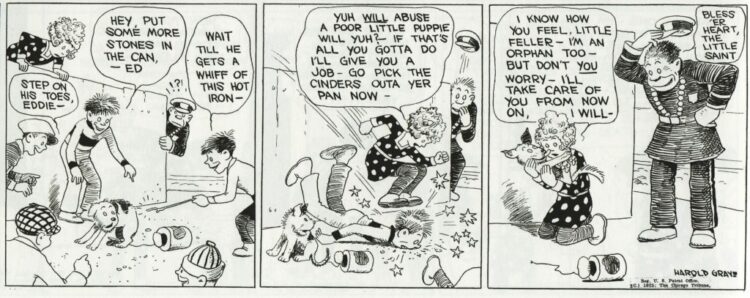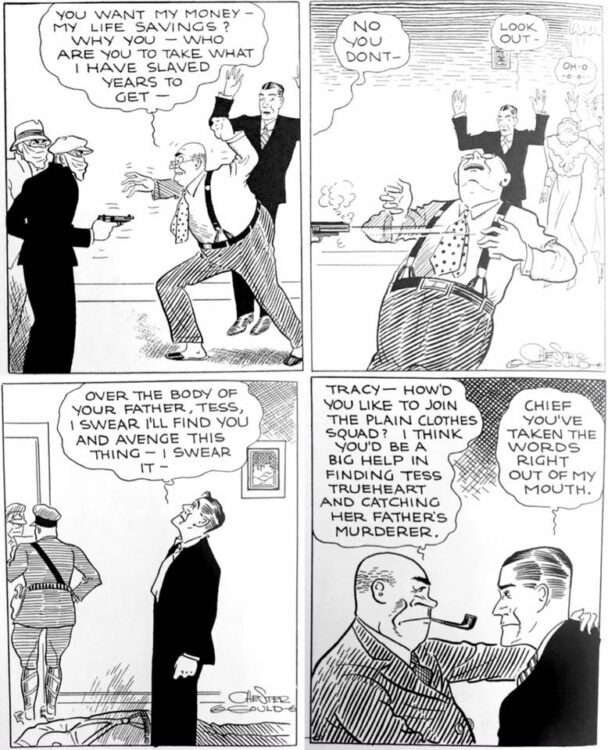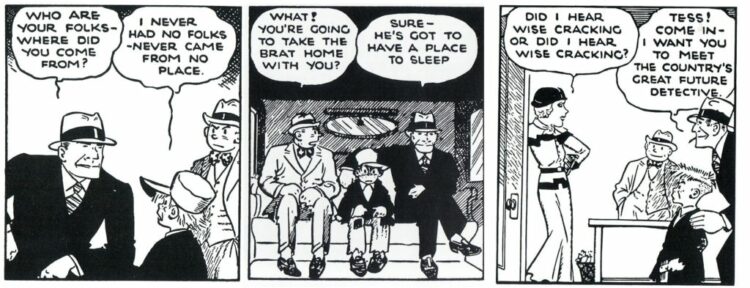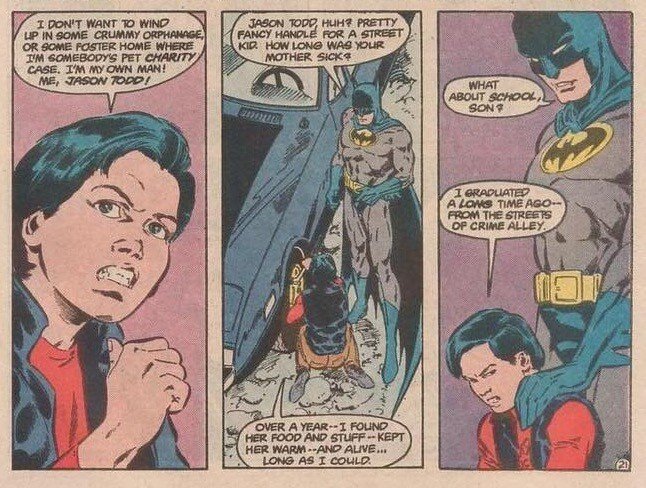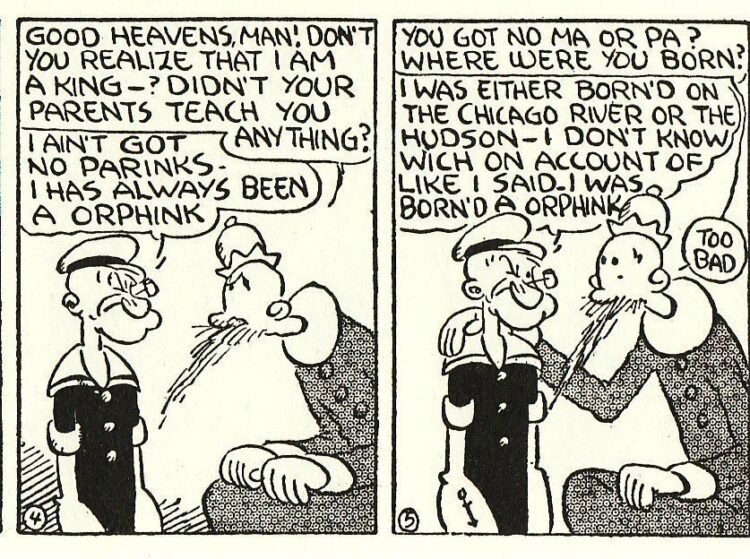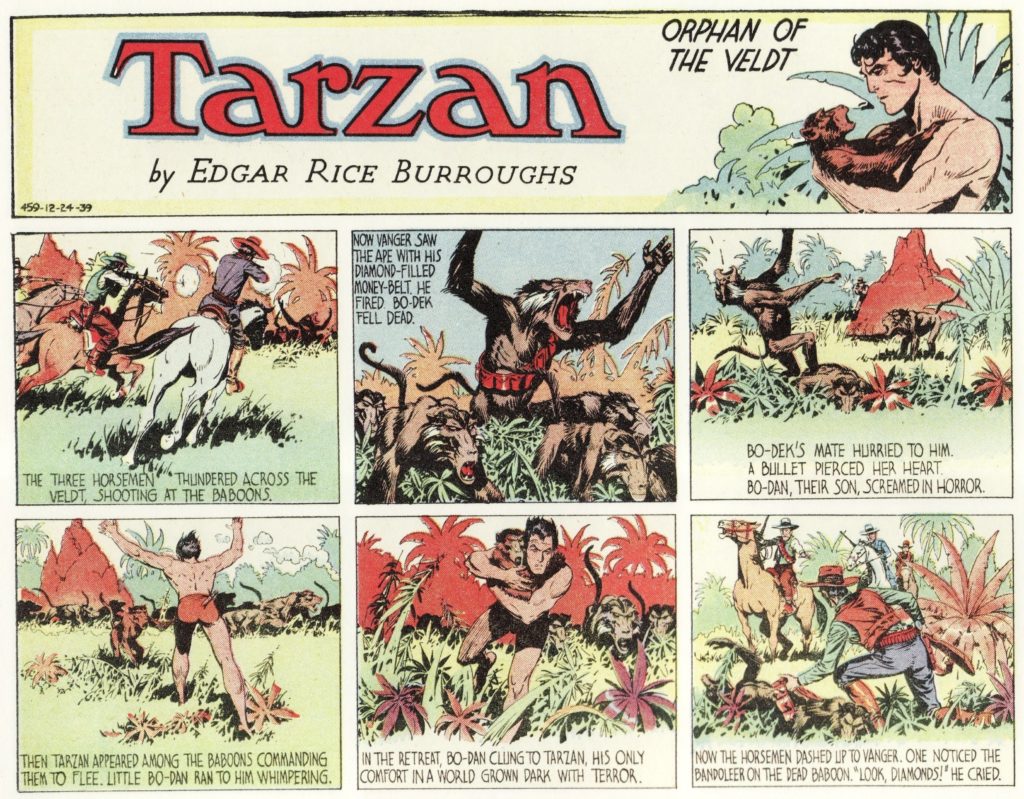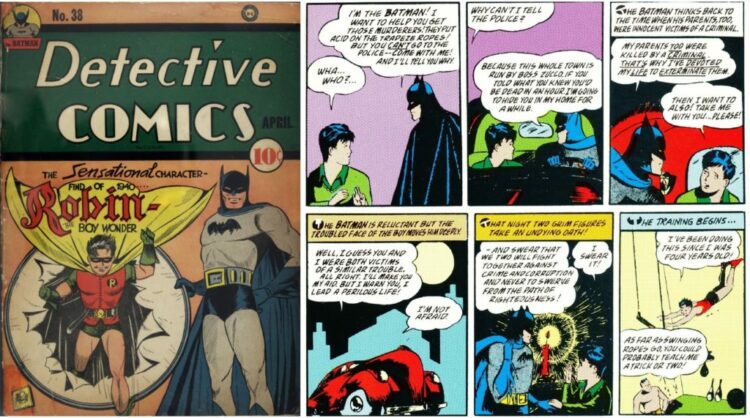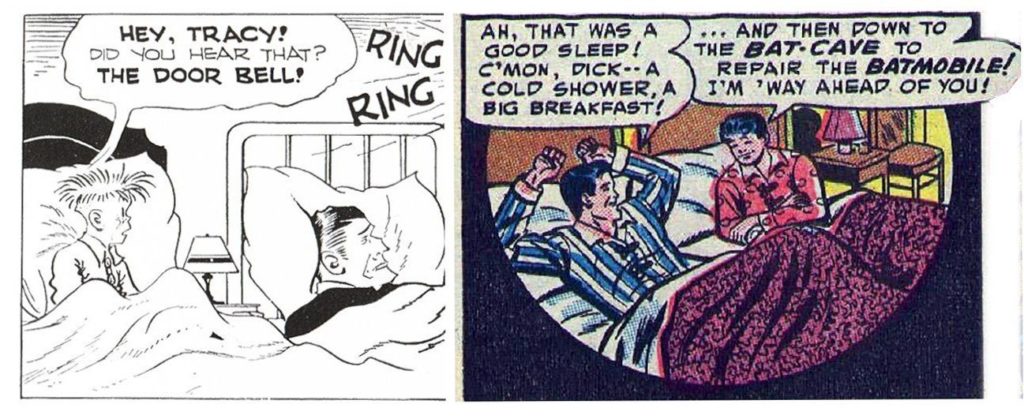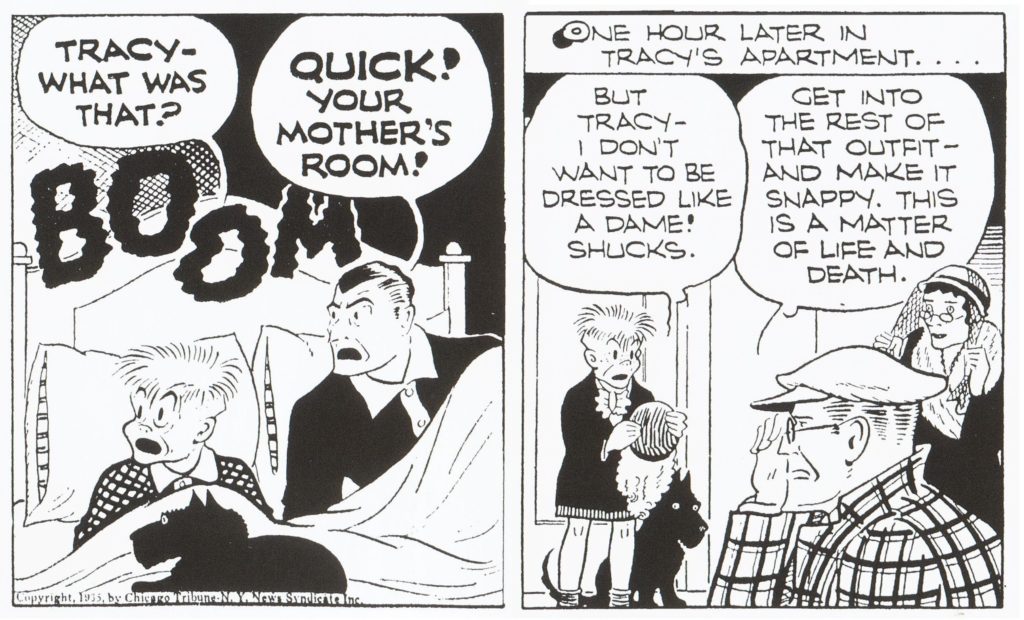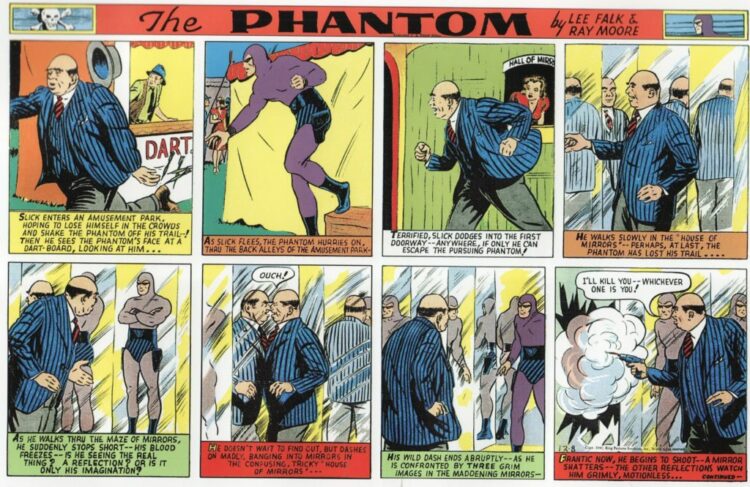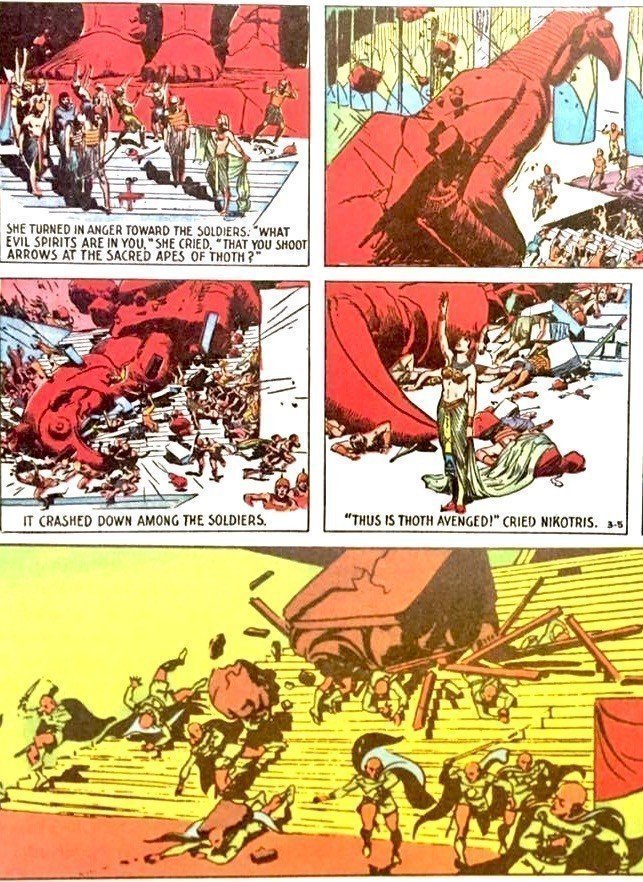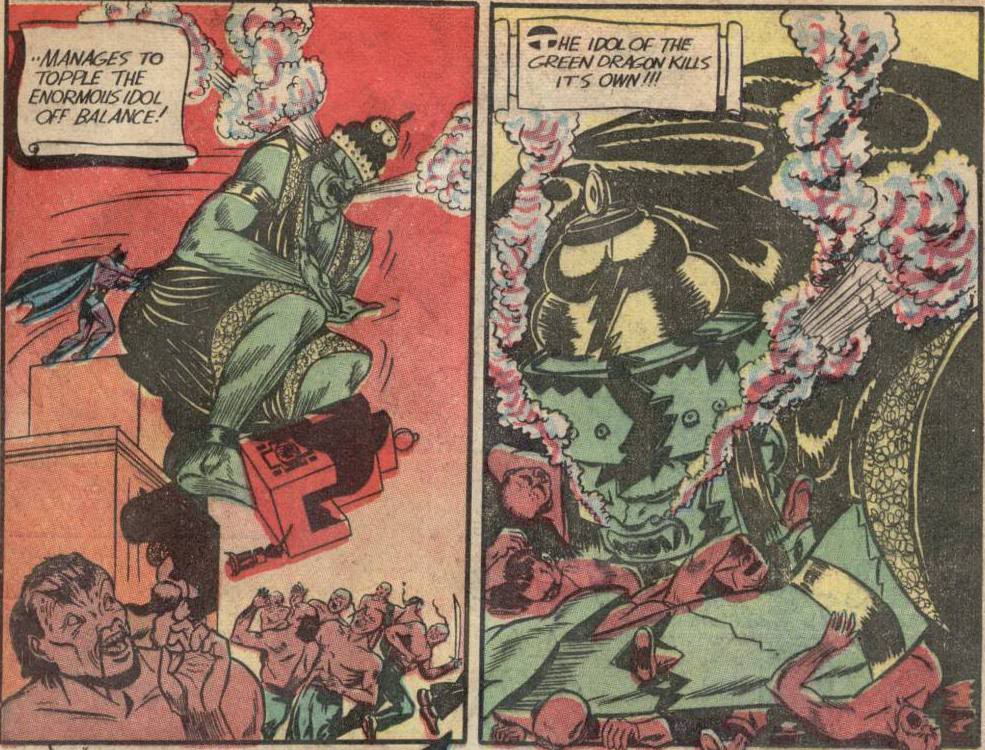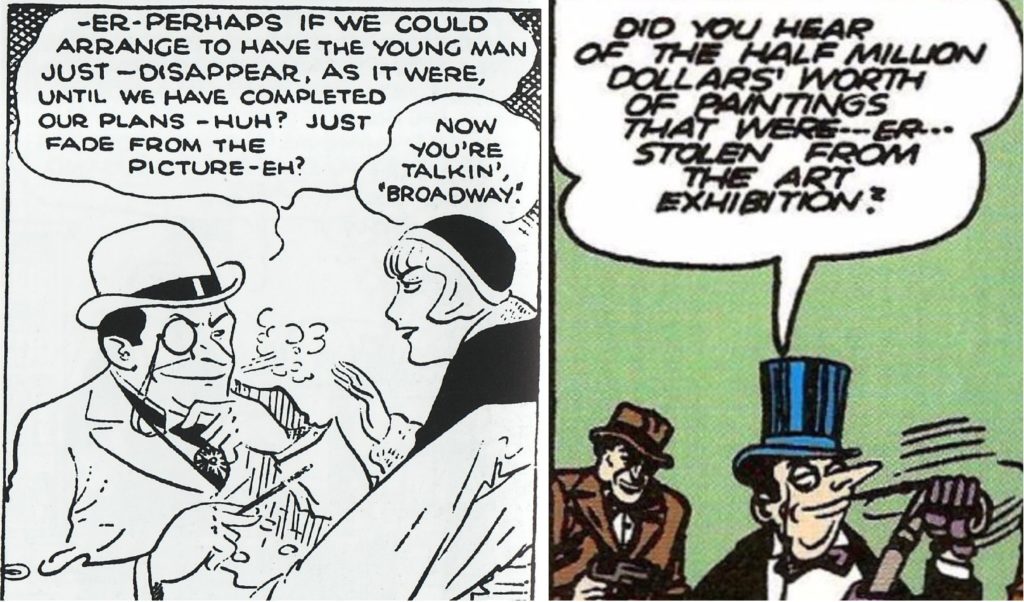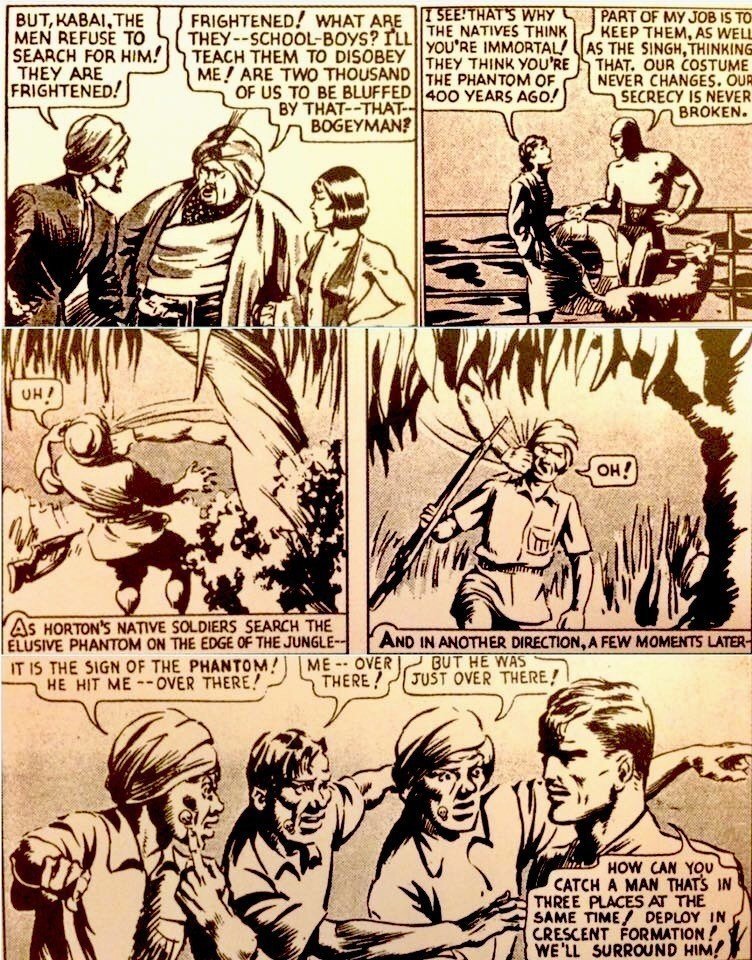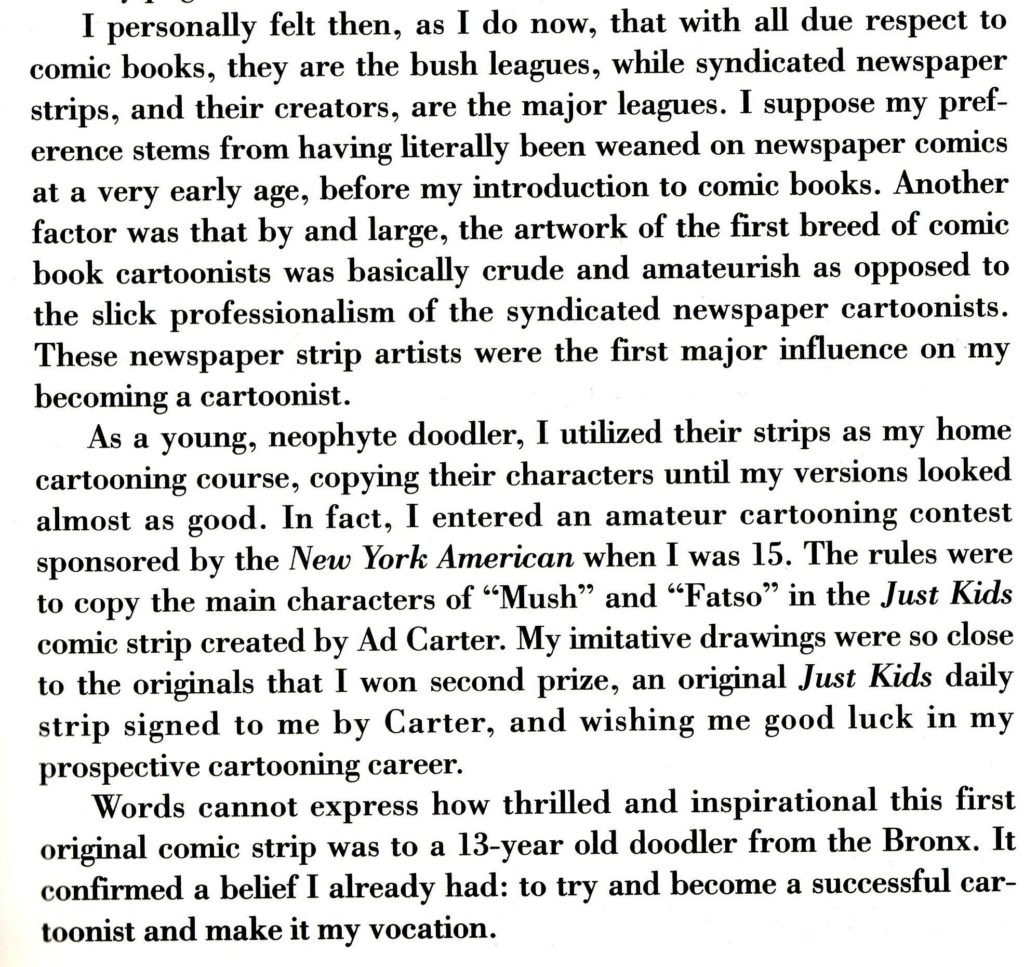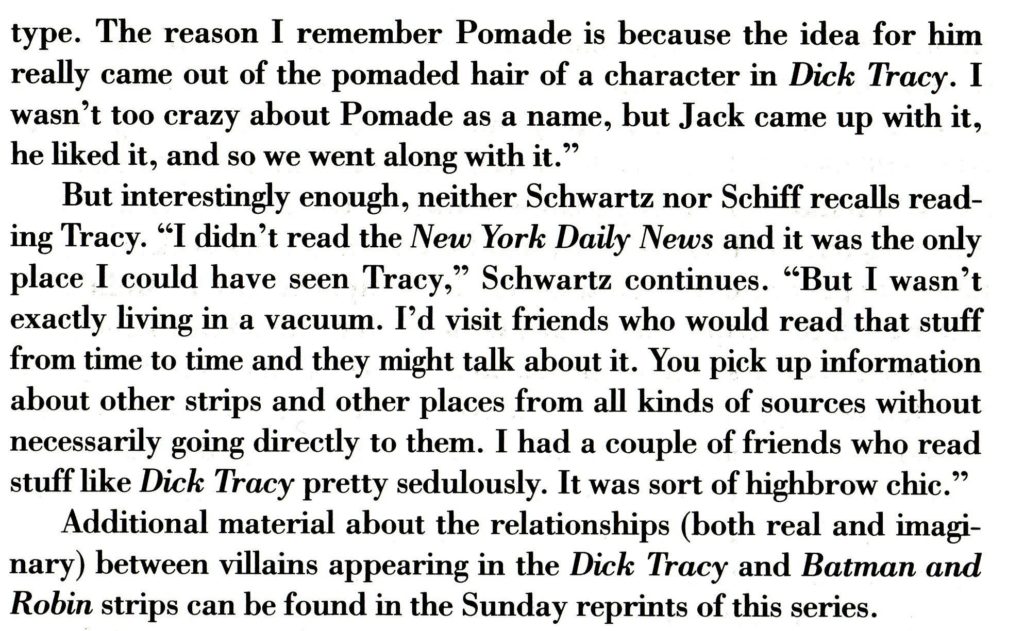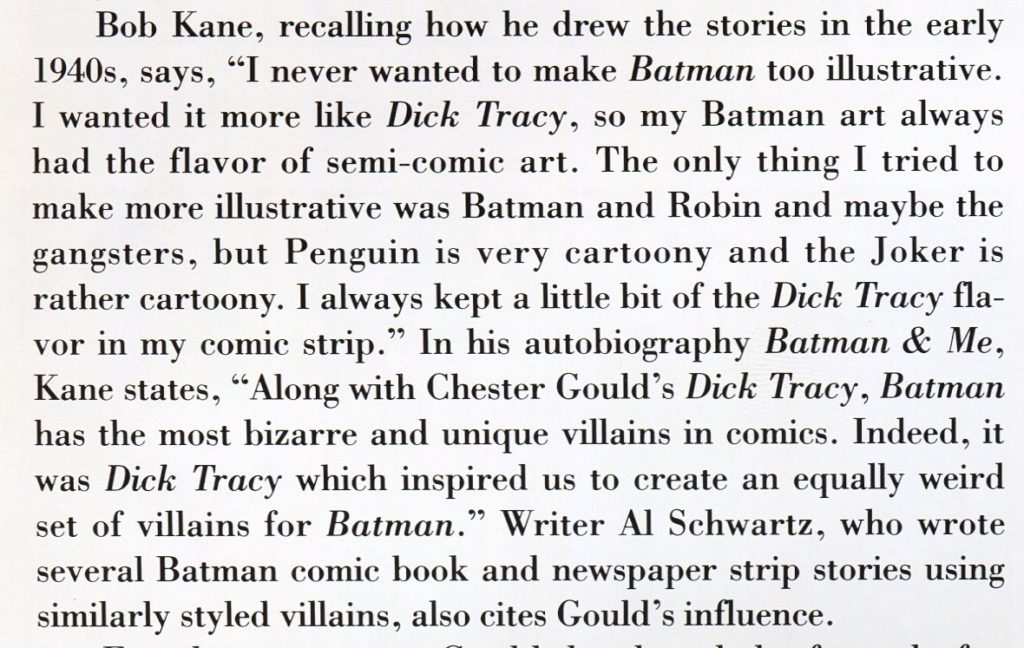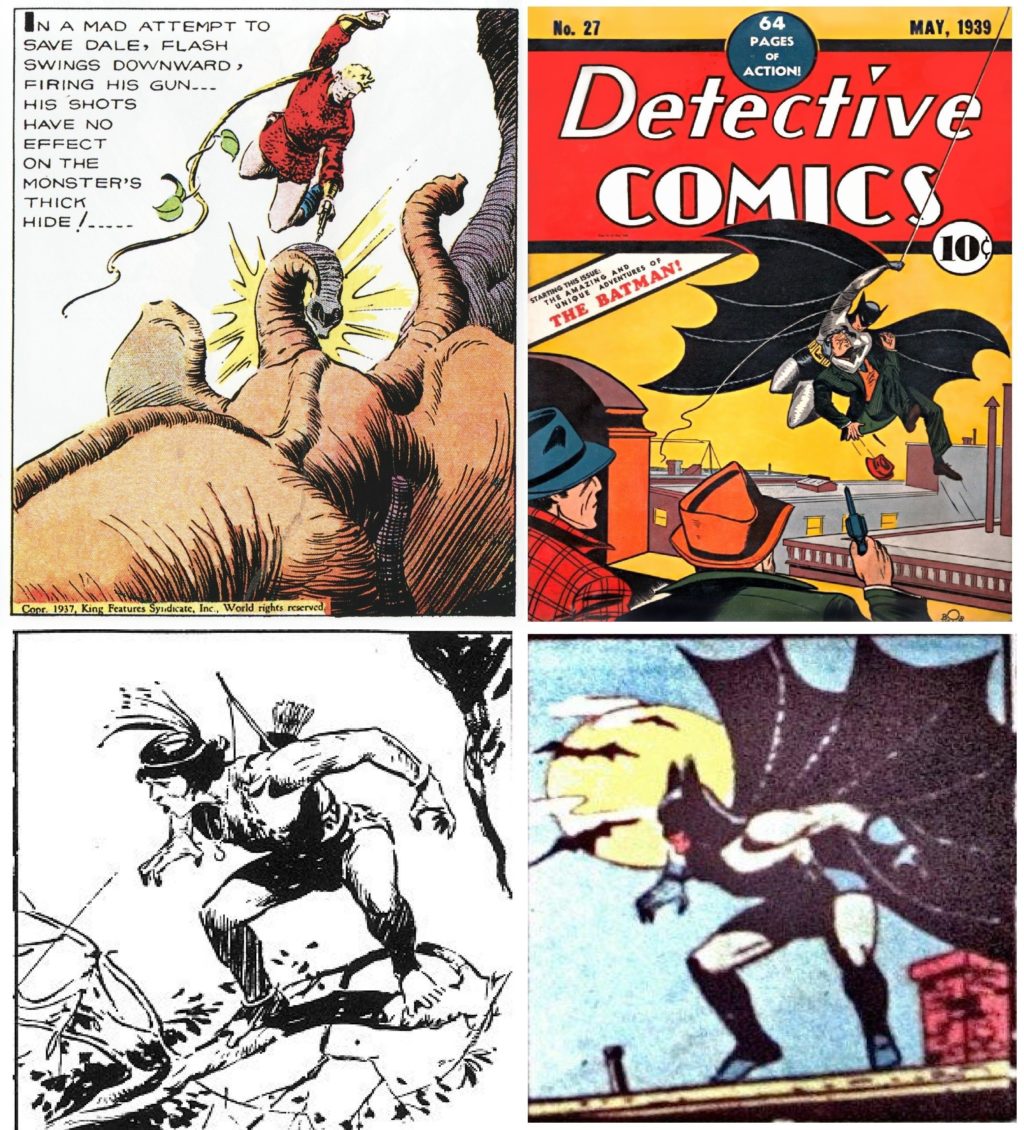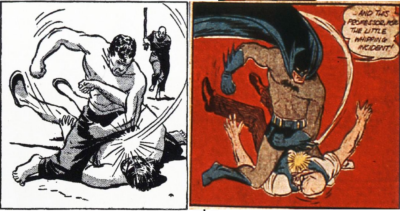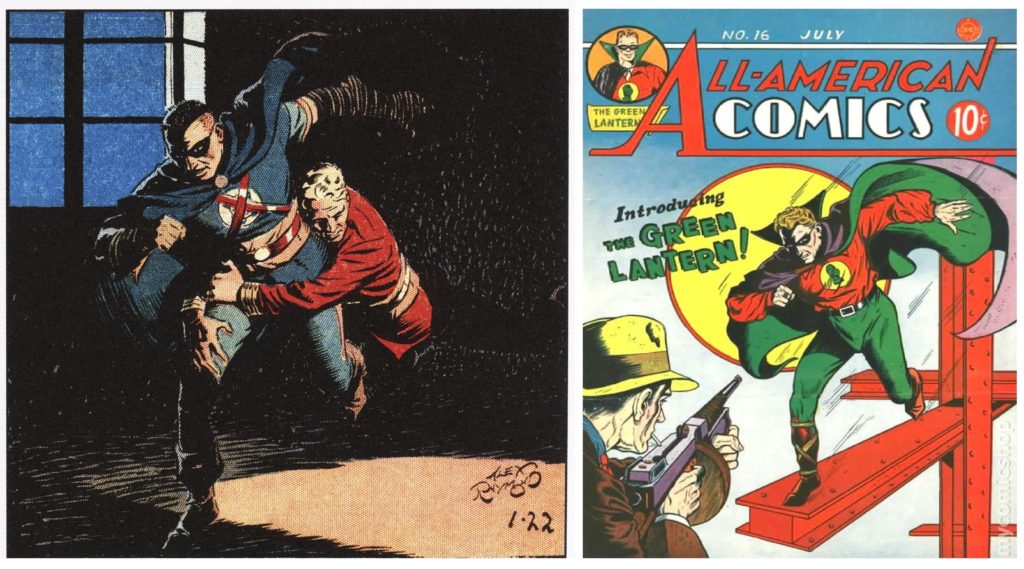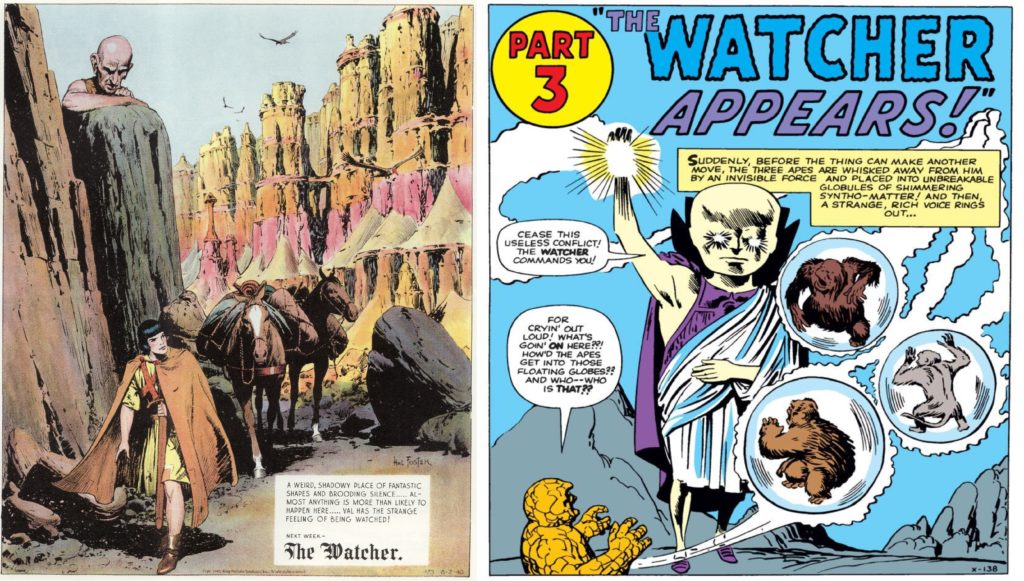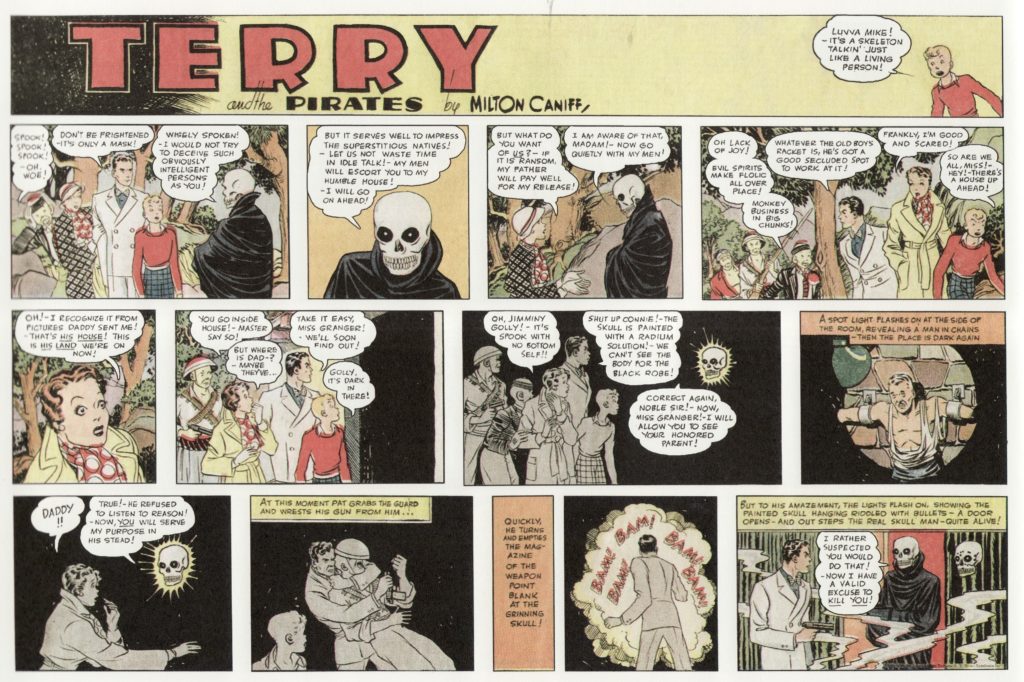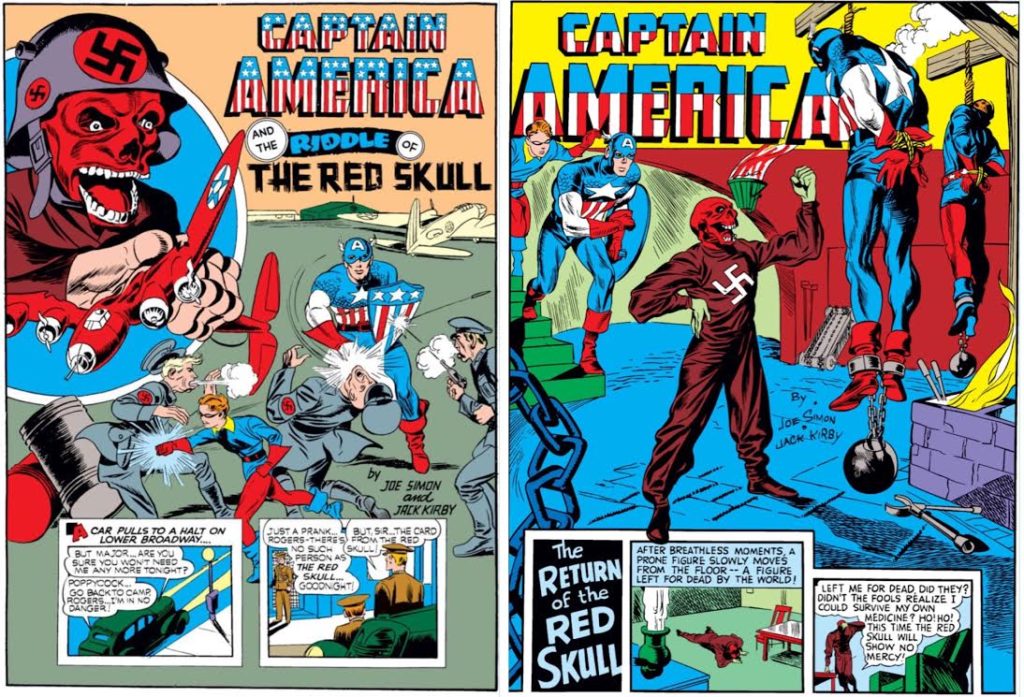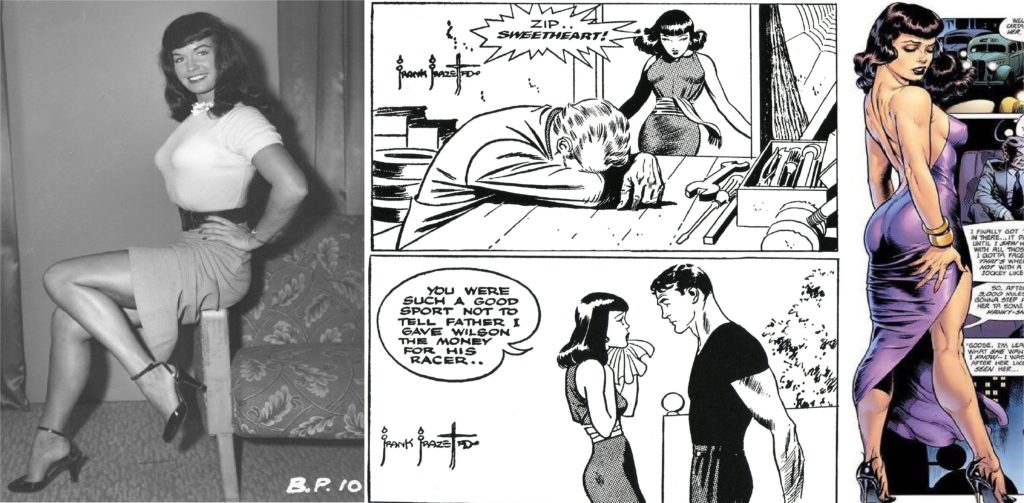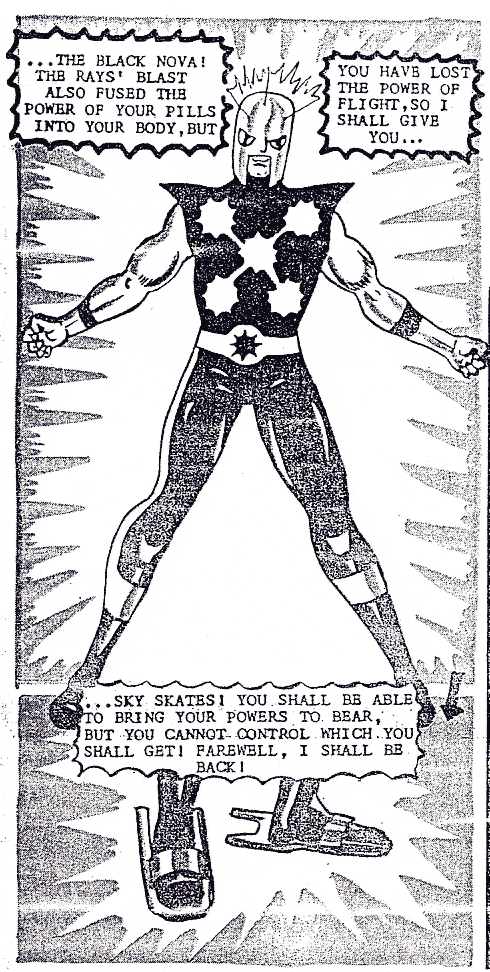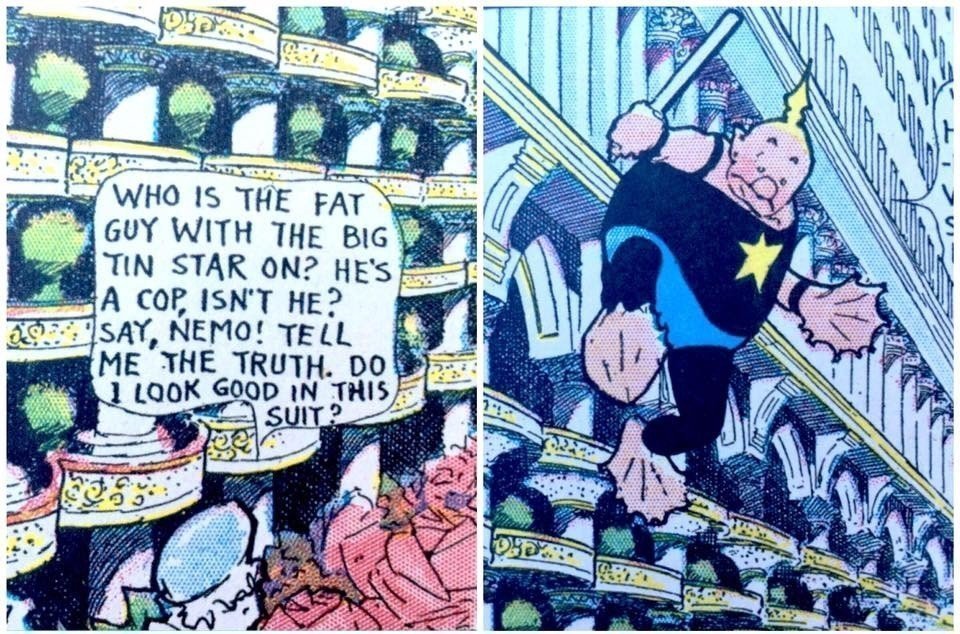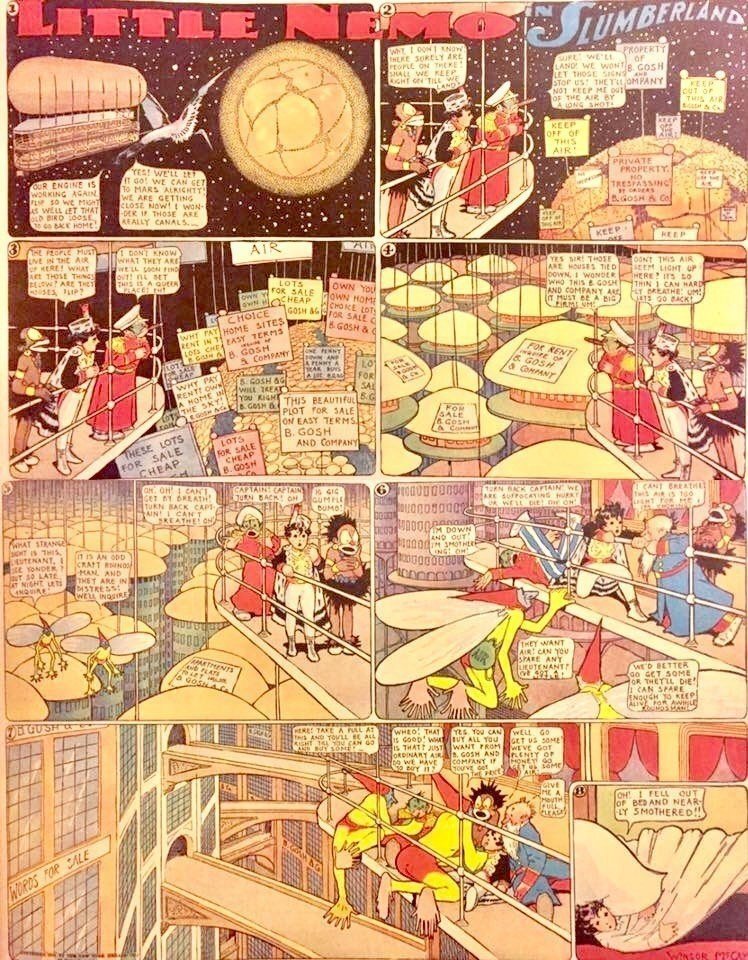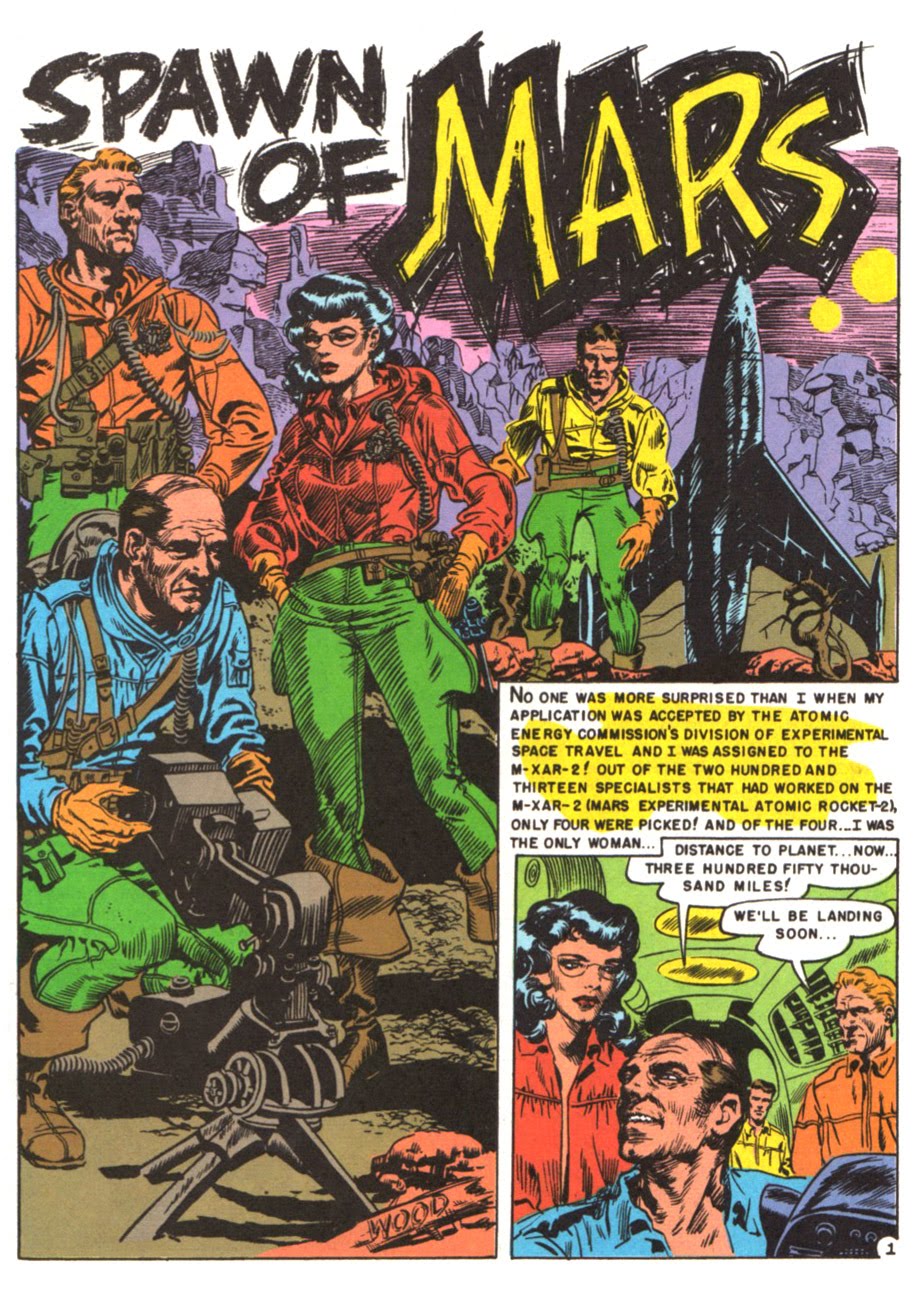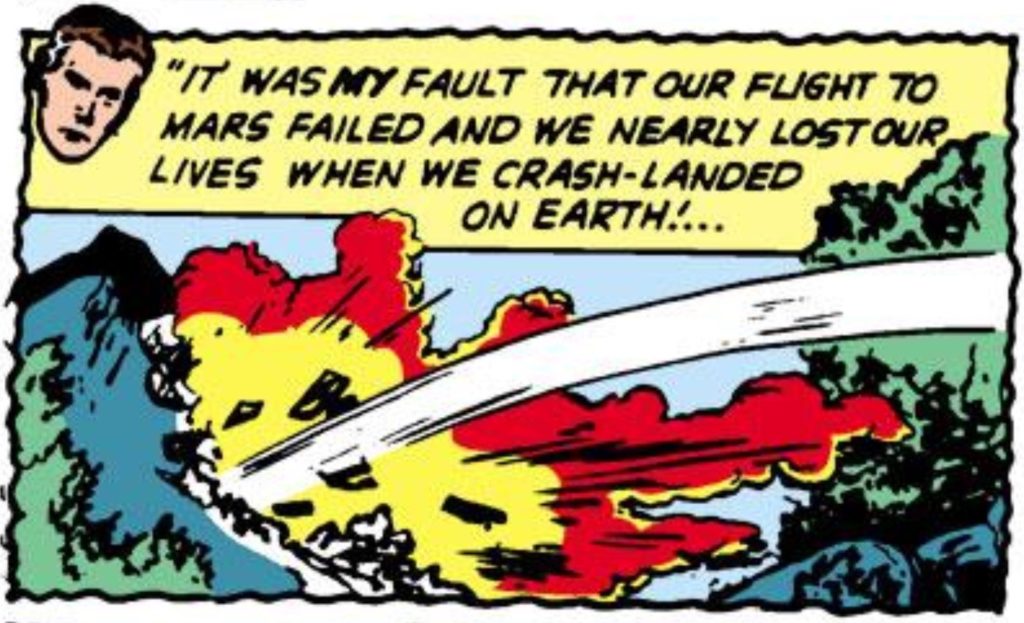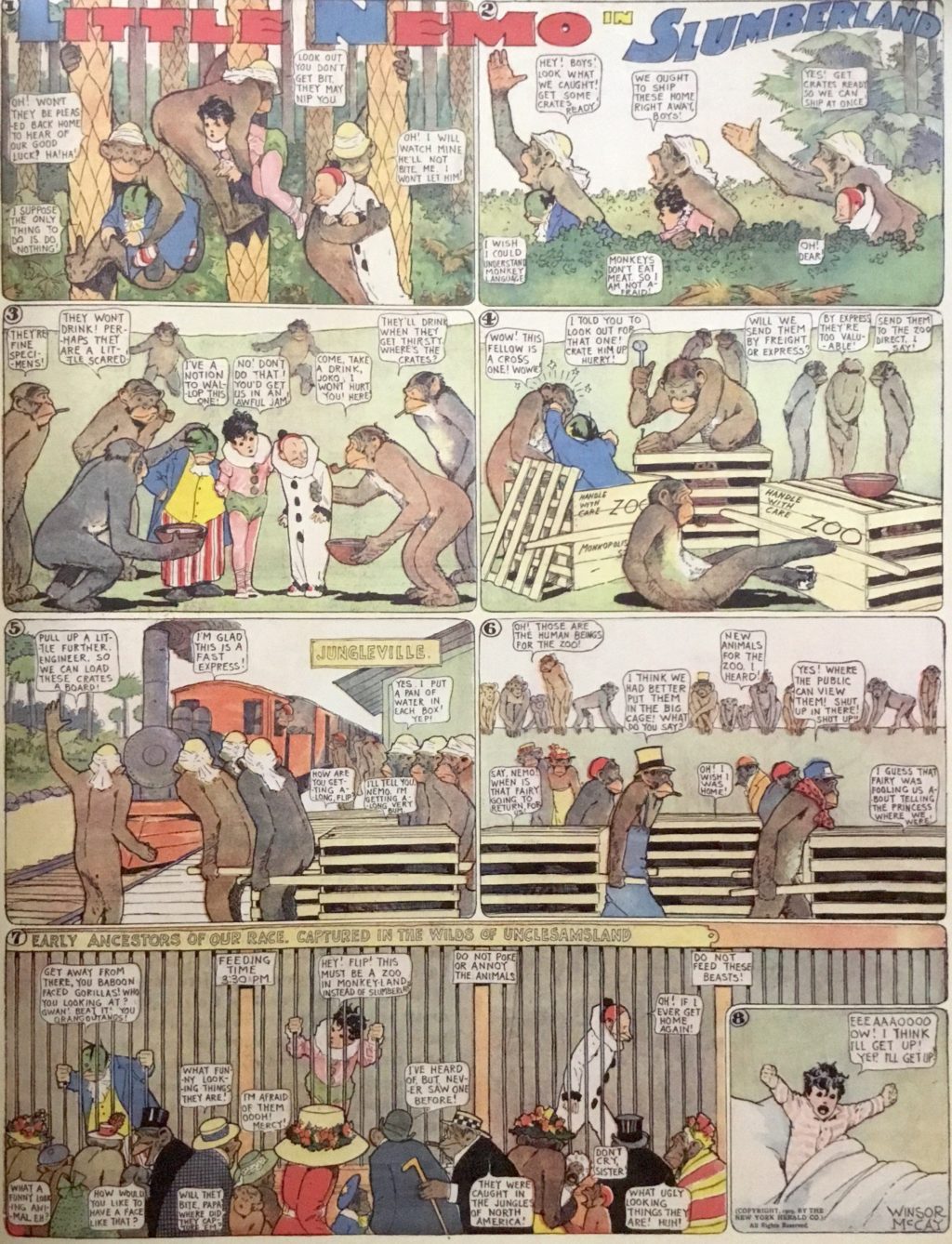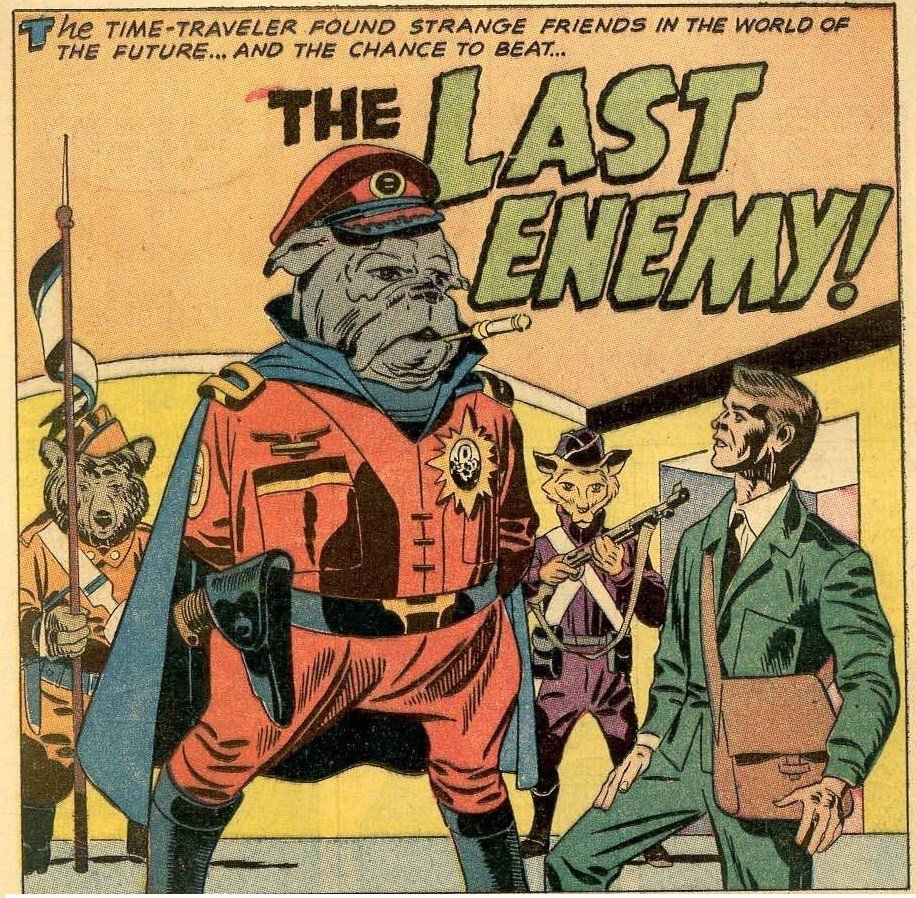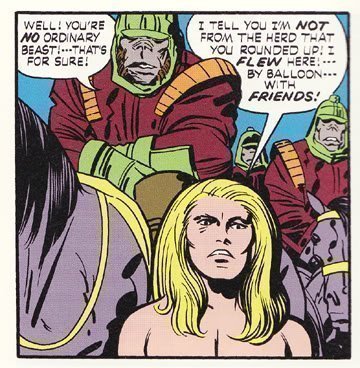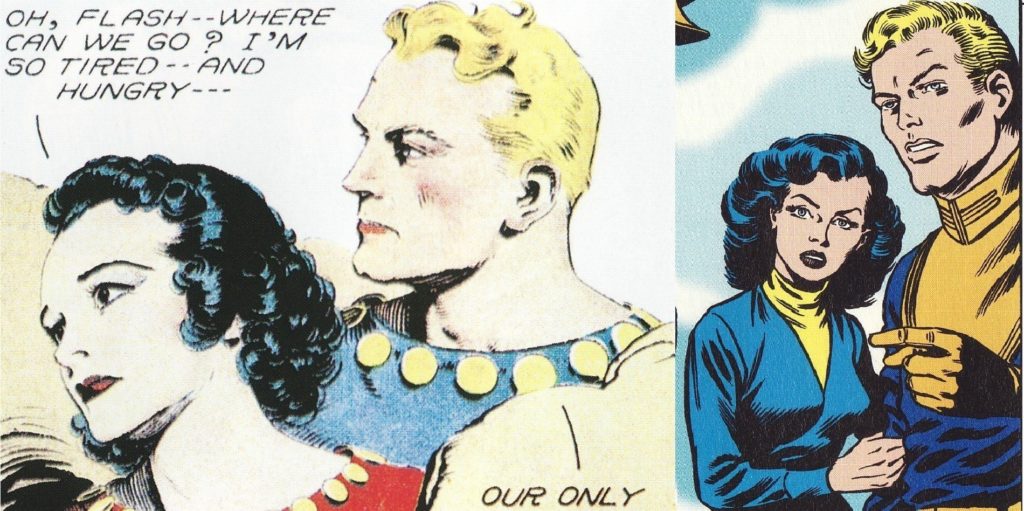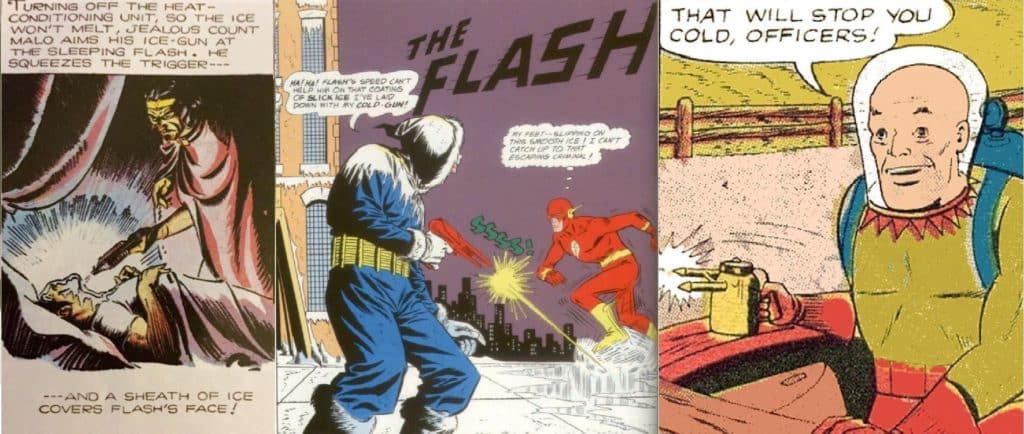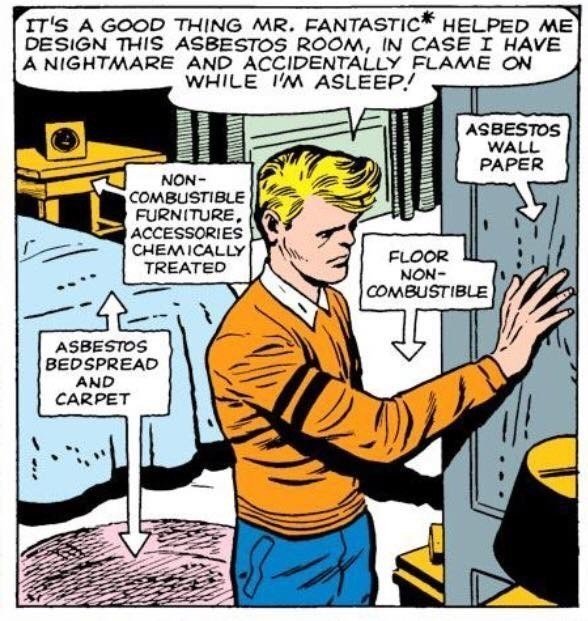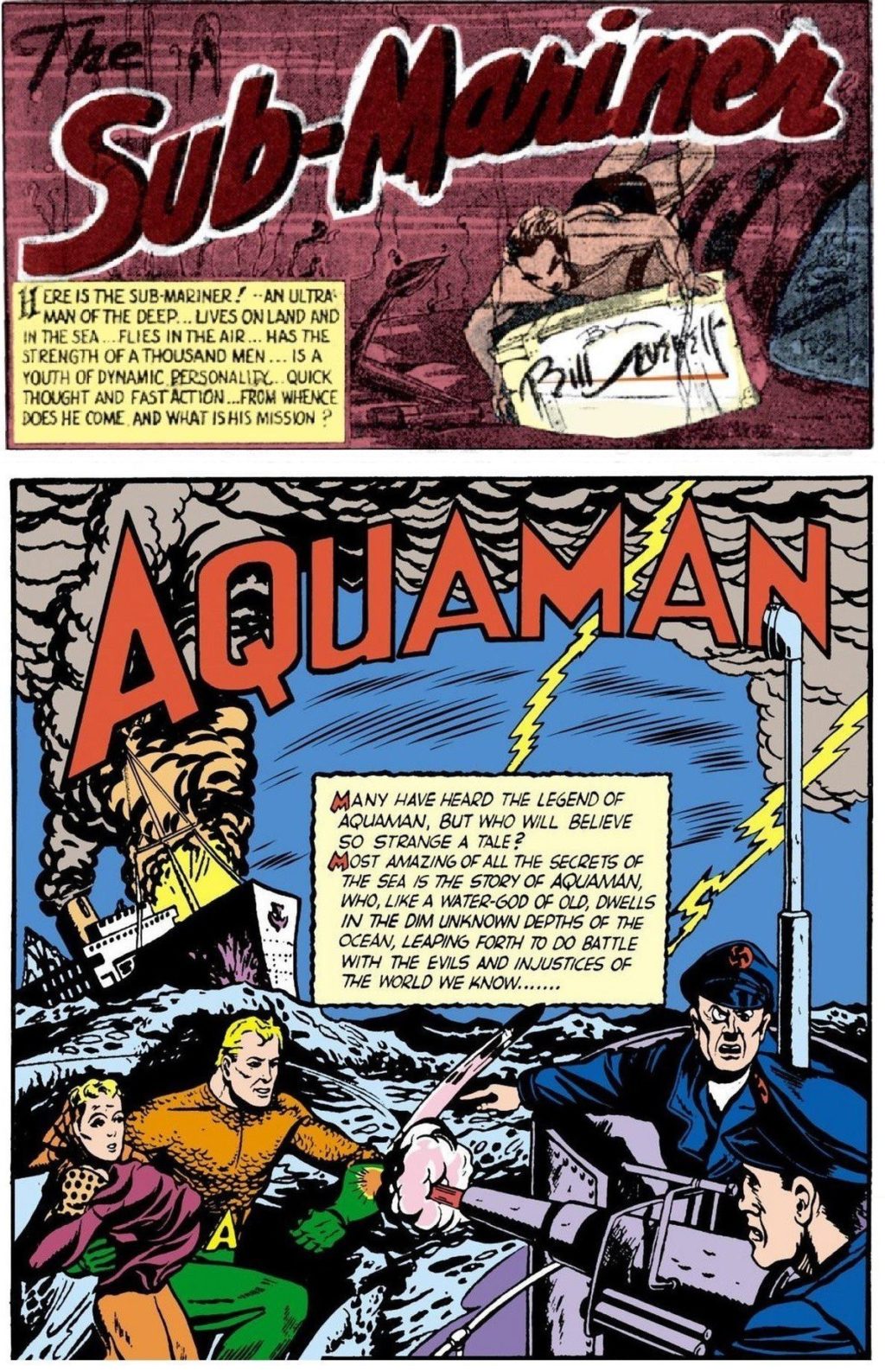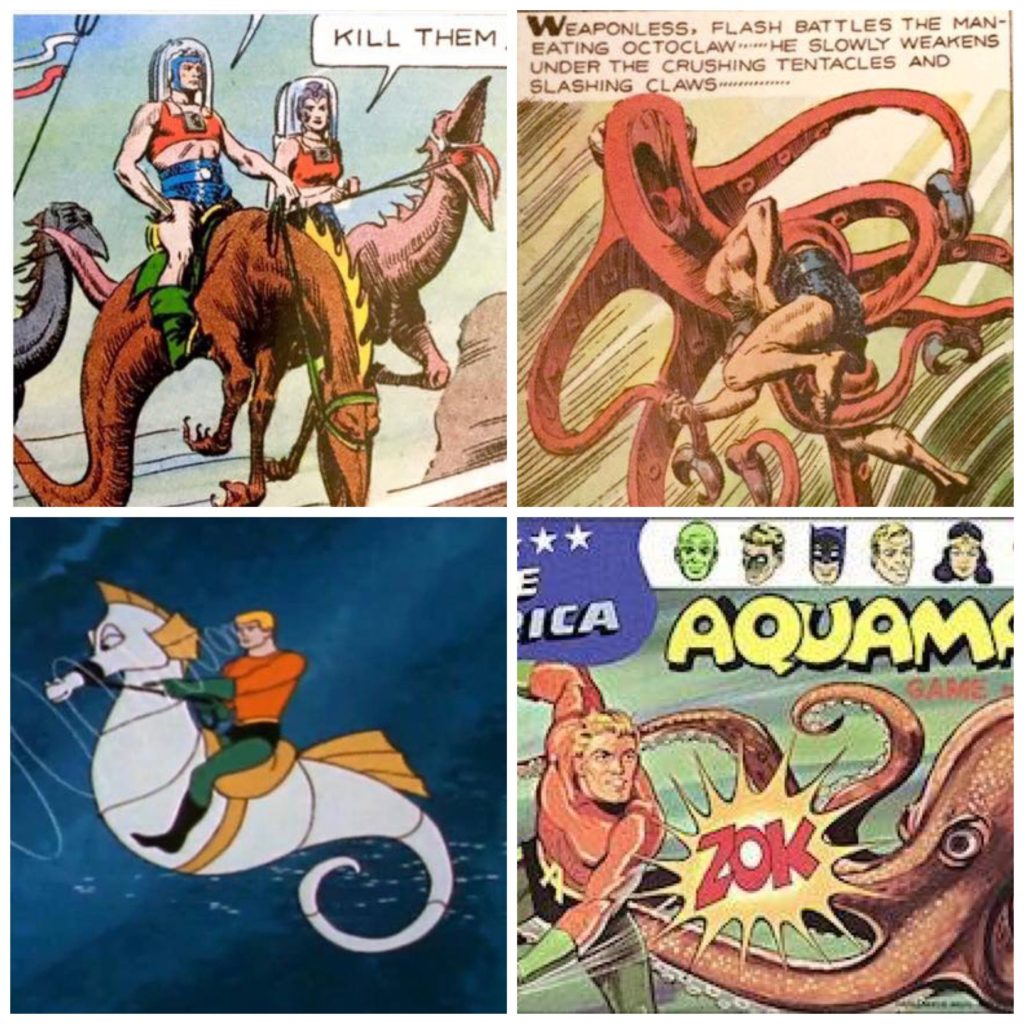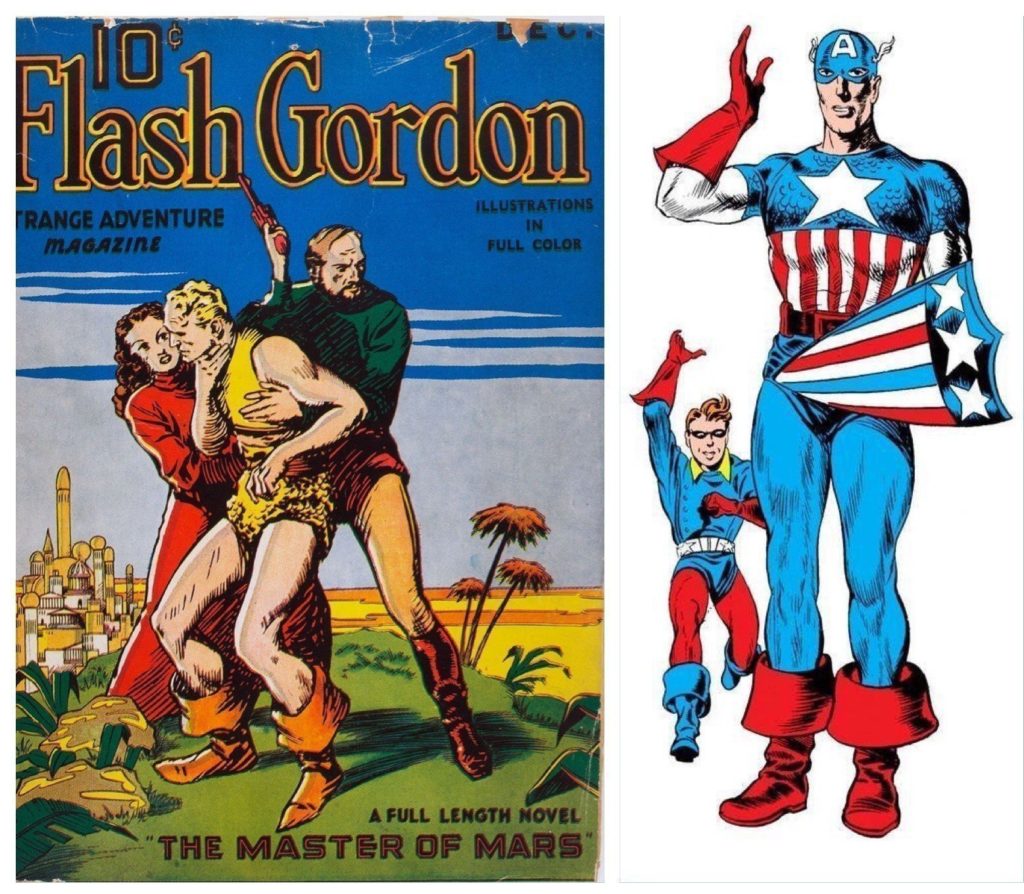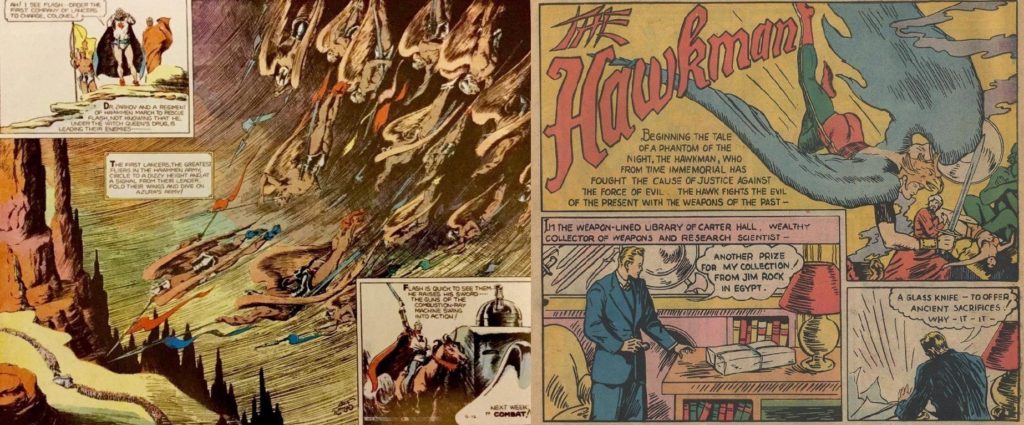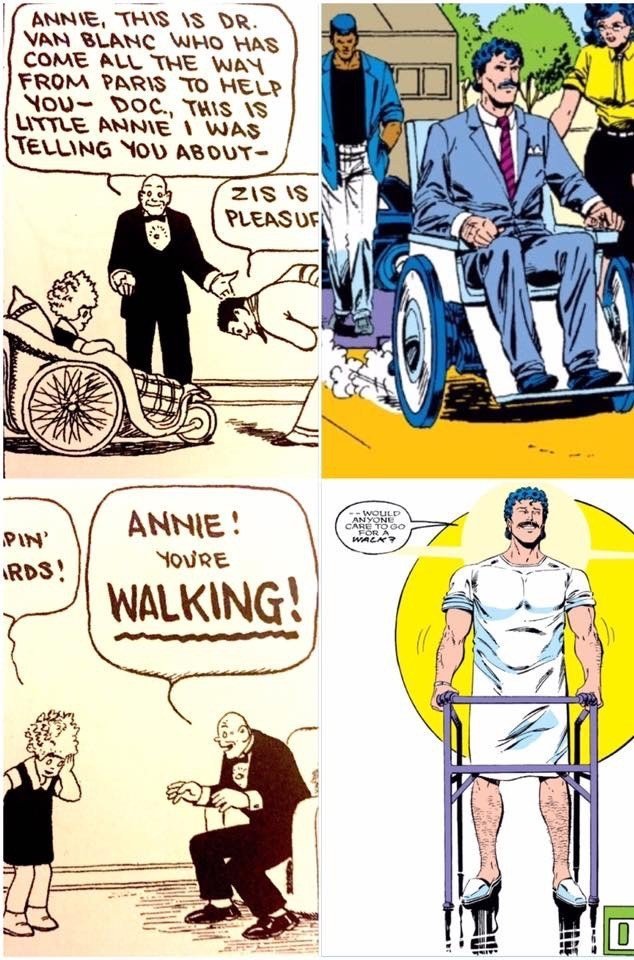From Newspaper Strips to Comic Books by Alex Grand
Read Alex Grand’s Understanding Superhero Comic Books published by McFarland Books in 2023 with Foreword by Jim Steranko with editorial reviews by comic book professionals, Jim Shooter, Tom Palmer, Tom DeFalco, Danny Fingeroth, Alex Segura, Carl Potts, Guy Dorian Sr. and more.
In the meantime enjoy the show:
Welcome to CBH, today we’re talking about interesting newspaper strip precursors to later comic books. Newspaper comic strips predate the first comic book by a definite 5 or so decades, and the first comic books were compilation reprints of newspaper strips. Comic book stories and choreography, evolved from old pulp magazine storylines as well as newspaper comic strips. This episode focuses on some newspaper comic strips, their art, plot devices or characters, which predate and likely influenced a lot of the more modern comic book stories, characters and story telling techniques that we generally hold in high regard. The creators of these strips are Harold Gray, Chester Gould, Burne Hogarth, Noel Sickles, Lee Falk, Hal Foster, Alex Raymond, Milton Caniff, Frank Frazetta, Winsor McCay, Dick Calkins, and Ray Moore.
First we’ll discuss the Orphan syndrome of comic book characters, comic book cinematography, some comic characters from strips used in later comic books, various science fiction gimmicks from newspaper strips used later in comic books, and the illusion of change.
There is generally a trend in comic books where there are a great many characters that are orphans, and their parents have died. Superman’s “real” parents were dead from planetary explosion, Batman’s parents were killed in front of him, Spider-Man’s parents were killed off so he was raised by his aunt and uncle, and so on.
There is something interesting about an Orphan who grows up without parents and follows their own internal sense of justice to become a person who is completely out of the box, and interesting to read about. Carry this into a long form of story telling, and we have the developings of an interesting person. Well, before the Golden Age of comics, newspaper strips did this first.
In 1924, Orphan Annie (who is also an orphan ) runs into a great many adventures, people and even criminals, and after establishing herself as a protagonist, takes on and shelters an orphan side kick dog.
She describes herself as an orphan not wanting to let this adopted orphan down, that she is all he can depend on, and they make their own little dynamic duo as well as they at times beat up criminals together. In the origin of Batman 1938 and Spider-Man 1962, their father figure was murdered by a criminal creating a one man war on crime. The same thing happened years earlier in 1931 to Dick Tracy in the newspaper strip which started him off on his decades long plainclothes squad war on mobsters. This event was the murder-roberry of his fiance’s father.
In 1932, Dick Tracy later meets a homeless orphan child thief, takes a fancy to him, & helps raise him.
1933 Dick Tracy daily is shown next with the title of the following Sunday shows Junior Tracy witnessing his biological father get killed in front of him by a criminal member of the mafia and becomes an orphan with a sense of vengeance toward crime. Young Bruce Wayne had a similar beginning in 1939.
Dick Tracy even goes on to say that this kid, Junior will be the country’s great future Detective. Max Collins read/wrote Dick Tracy and implemented Junior’s origin into Batman 408, 1987 as Jason Todd, the second Robin
Even Popeye was an Orphan as shown here in 1931.
and he adopts another Orphan, Sweet Pea in 1933.
In 1938, it would be shown that Terry was an orphan also adopted by the Senior Pat Ryan, and they would make quite a remarkable dynamic duo as well.
12-24-1939. Tarzan was also an orphan and he was molded by the early death of his parents, and raised by apes. In a battle, he picks up a side-kick orphan baboon, Bo-Dan whose parents were shot and killed in front of him.
Both big and little orphan connect in this very touching Sunday. So you have old strips with orphans and eventually orphans start adopting more orphans! These strips were all before Robin’s first appearance in Detective Comics 38, 1940 when the orphan Batman adopted the orphan Robin.
Senior orphans, Tarzan, like Orphan Annie, and Batman became as the Tarzan strip would put it, “the only comfort in a world grown dark with terror” for their junior orphan side-kicks. Hopefully that comfort has limits. Bruce Wayne continued a proud comic tradition of being a detective and sleeping inappropriately close to an orphan he adopted in Batman 84, 1954. Dick Tracy also did the same in a daily from 1934.
Between Dick Tracy and Dick Grayson, there’s a Dick in each panel.
Yeah it eventually becomes the same bed. And yes, that’s Dick making Junior disguise himself as a girl (for plot purposes) in 1938. As far as comic book cinematography, Frank Miller became famous from his use of shadows coming from certain directions with Blacks and whites called the chiaroscuro technique in his 1990s Sin City series.
However Jim Steranko used this technique in his 1970s Chandler illustrated novel, and has written that Noel Sickles’ influence on comics was pioneering this chiaroscuro technique (light coming from certain angles) in comic strip form in his early 30s Scorchy Smith (1936 image above). As far as further interesting comic book cinematography, there was an interesting mirror scene in a 1940 Sunday strip of Lee Falk/Ray Moore’s The Phantom that was astonishingly similar to the mirror scene in 1973 Enter the Dragon.
When Hal Foster depicted this Egyptian God statue tipping over and crashing down stairs, he made quite a splash in Tarzan 1933. Alex Raymond would repeat the same effect in Ming’s throne room 1934 in Flash Gordon.
This dramatic push of a statue on top of its followers was later used in several Hollywood films. Batman does the same thing in Detective Comics 40, 1940 killilng a few of these guys.
Penguin was created by Bill Finger and Bob Kane in Detective Comics 58, 1941. He was a very characteristic mafia boss who always had his criminal schemes.
9 years earlier there was an astonishingly similar character called “Broadway Bates” was created by Chester Gould for the Dick Tracy Newspaper Strip in 1932. The Dick Tracy character, The Blank from 1937 was a blank masked comic strip crime character that bore a very strong resemblance to the faceless man in Detective Comics 34, 1939.
This appears to expand out to even later characters like Steve Ditko’s Charlton character, The Question.
The Question was then “redone” by Alan Moore and Dave Gibbons into Rorschach in 1986. To further link the Phantom and Batman, in the 1936 Phantom Newspaper strip, Falk & Moore establish that the Phantom’s greatest strength is the use of symbolism and superstition to create a false supernatural immortal legend of himself in order to induce fear and confusion in his enemies.
Using symbolism against criminals, a cowardly and superstitious lot would be something later used by Finger/Kane in the Batman comic 1939. Batman co-creator Bob Kane had this to say about newspaper comic strips in the Batman Dailies book, 2007.
Writer Al Schwartz involved in Golden Age Batman stories including the 1943 newspaper strip under Jack Schiff recalls an idea for a villain that he got for Batman from Dick Tracy. This is from the history of the Batman Daily, 2007.
Another Dick Tracy Batman connection as recalled by Al Schwartz in 1946/1947 from the Batman dailies book, 2007.
Bob Kane and Al Schwartz had more to say about specifically importing the look and feel of Dick Tracy strips to their Batman Stories from the Batman Sunday book, 2007.
To further directly link Batman into newspaper strip influence, the Batman body language from the cover of Detective Comics 27, 1939 was taken from Alex Raymond’s Flash Gordon 1-14-1937, and in Detective Comics 33, 1939 was largely taken by Bob Kane from a panel in a 1938 reprint of Hal Foster’s 1929 Picture strip of Edgar Rice Burroughs Tarzan.
Bob Kane also swiped from Milton Caniff’s 1930s Terry and the Pirates Strip in Detective Comics #36, page 11 1940.
Sheldon Moldoff swiped Alex Raymond’s Flash Gordon Sunday panel from January 22, 1939 for his cover to All American Comics 16, 1940 depicting the Golden Age Green Lantern.
Just as there were real life influences like Bernard MacFadden and Charles Atlas, as well as pulp or book precursors like Doc Savage or Gladiator, there were also newspaper strip inspirations to Jerry Siegel and Joe Shuster’s 1938 Superman like Roy Crane’a Captain Easy 1929, Pat Ryan from Milton Caniff’s Terry and the Pirates 1934, leading to a direct Siegel/Shuster Superman published precursor, Slam Bradley 1937.
There were a couple more notable influences from Hal Foster, in 1937 he has depicted Prince Valiant as a Demon character using a mask. This Demon design was used by Jack Kirby who homaged this character in his 1972 Demon comic for DC Comics.
In 1940, Hal Foster created a character in the Prince Valiant strip called the Watcher who was tall, bald and robed watching from afar. In 1963, Jack Kirby, Steve Ditko and Stan Lee introduced another Watcher with a similar design in Fantastic Four 13, 1963.
Before the Red Skull first appeared in 1941, Terry and the Pirates by Milton Caniff had their own villain named the Skull in 1935.
Notable for always being one step ahead of the heroes, with a diabolical plan up his sleeve, and wearing a mask to scare superstitious natives. This is the first appearance of the diabolical Skull shown here well before the Red Skull by Ed Herron, Jack Kirby and Joe Simon during World War 2.
Since we’re on comic characters from newspaper strips, we’ll go ahead and add an interesting historical footnote, in 1951, Bettie Page’s images with bangs started showing up in various men magazines before her bondage photos in 1952.
It was said that Frank Frazetta modeled Raven Rockette after Bettie Page’s style in a 1952 daily strip. It is also said that Frazettas beautiful portrayal of women, especially this one influenced Dave Stevens in his series, The Rocketeer in 1982. As far as dress code of some news strip characters used for future comic book characters, 1934 Flash Gordon, 1946 Atoman, 1969 Captain Marvel all had a star on their chest.
Roy Thomas once wrote that he modeled the Captain Marvel costume off of Atoman who was created by Ken Crossen & Jerry Robinson. There is no direct quote that Robinson modeled Atoman directly off of Alex Raymond’s Flash Gordon, however it was very clear that most of these golden age artists read his Flash Gordon Sunday strip, and the similarity is very strong. Another similar cosmic star chested character would include Nova, whom Marv Wolfman and Len Wein designed his costume for their fanzine in 1966.
What does the star on the chest of a hero generally mean? Well maybe this strip from Little Nemo 1910 has the answers where it is used on the chest of a Police Man of Mars.
It has been said that the Silver Age of Superhero comic books is more science fiction based, and much of this science fiction has some roots in old newspaper strips, especially in Little Nemo and Flash Gordon. HG Wells wrote his Martian Science Fiction earth invasion story, War of the Worlds in 1898. This story did help in making the word “Martian” mainstream enough to inspire the amazingly talented Winsor McCay to create a very early comic Martian Sci-Fi strip in 1910.
Little Nemo and friends travel with King Morpheus’ air ship to Mars and encounter green Martians. 1930, Buck Rogers invents interplanetary space travel for a desperate mission to Mars in the year 2430.
The name of the ship is “Satellite.” These Martian comic strips would go on in Science Fiction comic books like this one drawn by Wally Wood for Weird Fantasy 9, 1951 called Spawn of Mars.
The whole concept of flying to Mars was the entire reason for the space flight that gave the Fantastic Four their powers in their first issue. Reed Richards reveals that in FF2, 1962 with dialogue written by Stan Lee.
There is another strip where Little Nemo and Flip travel to a veritable Planet of “damned dirty” Apes found somewhere in Slumberland in 1909. Reversal of the species’ role in fiction has been a good mechanism for social commentary, however Winsor McCay did that more than 60 years before the 1970’s Planet of the Apes films.
Talking animals oppressing humans would be a theme continued in 1957, Alarming Tales 1 written and drawn by Jack Kirby.
This concept would be used in the 1968 Planet of the Apes film, and again in Jack Kirby’s 1973 series, Kamandi.
Flash Gordon can be considered quintessential in its contributions to further comic books, and that is because Alex Raymond was extremely visually gifted. This science fantasy action hero gatewayed perfectly into a sci-fi action hero, and there are some great carryover similarities between Flash Gordon 1930’s-1940s and Adam Strange 1950s-1960s.
Both are blonde masculine hero’s from earth with brunette love interests who travel to far away planets from earth, defend justice, and save their girlfriends in the process. In 1940, the Flash Gordon strip had a science fiction device alled the maddening riot-ray, and when fired it would cause everyone in its radius to go mad and destroy everything and everyone around it.
DOOM PATROL #96 from 1965 also had a story where invisible waves could drive a population to riot. Captain America 193, 1976 by Jack Kirby had a similar mad-bomb that performed the same frighteningly destructive function. Flash Gordon 1939 had their very own ice-gun villain, Count Malo of the Northlands.
Quite a many years before Captain Cold 1957 and Mr Freeze 1959. In Flash Gordon 1935, there was a story of Ming’s Stormtroopers who could withstand fire due to wearing asbestos protecting them from fire.
This concept was used a lot with the human torch years later with this image from 1962.
Hopefully these guys didn’t get mesothelioma. Before there was Sub-Mariner in Marvel Comcis 1, 1939 or Aqua-Man in More Fun Comics 73, 1941,
there was Flash Gordon’s 1936 adventures in the undersea kingdom of water-breathers named Coralia. Flash would gain temporary underwater breathing abilities and fight with an undersea race who were led by Triton and Undina against Ming the Merciless.
Our blonde hero would, just like Aquaman in later years, ride giant sea-horses, battle undersea octopi, would wear water-helmets and establish armies to invade land. An underwater civilization using water helmets to invade land would be used more than 25 years later in Jack Kirby and Stan Lee’s Fantastic Four Annual 1, 1963.
On the cover of a 1936 Flash Gordon Strange Adventures pulp magazine, our hero wears an odd pair of boots with a same style that would be used by Joe Simon and Jack Kirby to design Captain America’s footwear.
The Hawkmen in 1935 would likely be read by Gardner Fox and used as the hero Hawkman in 1940, Flash Comics 1.
In the Power Men of Mongo story arc, 1940, Flash Gordon wears an electrician outfit that is oddly similar to the revolutionary Flash costume that Carmine Infantino designed for his Showcase 4, 1956 Showcase 4 is often credited to have started the Superhero Silver Age.
1956 was also the year that Alex Raymond died in a car crash.
When you read comics long enough, one inevitably runs into the issue of the illusion of change.
The concept that the character progresses and develops, but does not really change or grow because no one wants to see Spider-Man as a geriatric patient, or Batman getting alzheimers, or Orphan Annie as a 50 year old woman, and the companies have a brand to protect so they generally keep the character the same but going through some short termed crisis’ to keep it interesting. This is the illusion of change, where the character returns back to what they started and they last for so many years, that this illusion becomes really obvious after a while. The one key example that ill discuss here is permanently crippling spinal cord damage. 1926. Both Orphan Annie and Tony Stark 1989 got spinal cord damage and told they were to never walk again. They would walk again within 6 months by miraculous unconventional surgeries. Long form story telling, as in eternally long tells us that the illusion of change is inevitable in comic books as it was in comic strips.
This has been another episode of CBH, this was to function as a brief introduction to newspaper comic strips, and how they essentially pioneered a lot of characters, cinematography, plot devices, and the inevitable illusion of change that is currently very popularly received in modern comic books. Cheers, and have a great day.
Join us for more discussion at our Facebook group
check out our CBH documentary videos on our CBH Youtube Channel
get some historic comic book shirts, pillows, etc at CBH Merchandise
check out our CBH Podcast available on Apple Podcasts, Google PlayerFM and Stitcher.
Use of images are not intended to infringe on copyright, but merely for academic purpose.
Action Comics ©DC, Detective Comics ©DC, Amazing Fantasy ©Marvel, Little Orphan Annie ©Tribune Media Services, Dick Tracy ©Tribuine Media Services, Batman ©DC, Tarzan ©ERB, Detective Comics ©DC, Scorchy Smith ©Dean Mullaney, Little Nemo in Slumberland ©Sunday Press, Chandler ©Steranko, Sin City ©Miller, Phantom ©King Feature DC, Flash Gordon ©King Feature Syndicate, Watchmen ©DC, Terry and the Pirates ©Tribune Media Services, Captain America Comics ©Marvel, Johnny Comet ©Frazetta Properties LLC, Rocketeer ©Stevens, Captain Marvel ©Marvel, Nova ©Marvel, Buck Rogers ©The Dille Family Trust, Weird Fantasy ©Gaines, Fantastic Four ©Marvel, Kamandi ©DC, Mystery in Space ©DC, Iron Man ©Marvel, Photos ©Their Respective Copyrightholders












